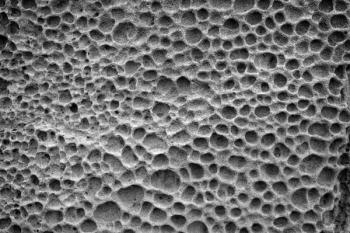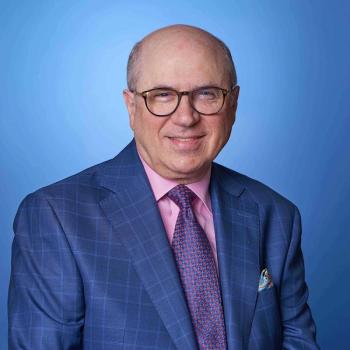
Racism, Policing, and COVID-19: How Do We Justify Racial Disparities in 2020?
Psychiatrists are in a unique position to actively address the collective trauma caused by rampant and persistent race-based disparities in health care and police violence.
The very serious function of racism . . . is distraction. It keeps you from doing your work. It keeps you explaining, over and over again, your reason for being.Toni Morrison
Many envision a world of equality, freedom, and inclusion for all. Beyond slavery’s brutality (where many physicians enslaved people), the US Constitution – 14th Amendment (July 9, 1868) specifically addresses citizenship rights and guarantees equal protection under the law. The 14th Amendment continues to figure prominently in landmark civil rights racial discrimination cases (eg, Brown v Board of Education of Topeka; 1954). Yet, minority Americans continue to be discriminated against based upon their race (as well as their ethnicity). Moreover, medicine with its problematic history is not blameless: James Marion Sims (considered the “father of gynecology”) experimented on enslaved black women (without anesthesia), tolerated segregation (including public facilities and hospitals), discriminated against African American physicians, experimented on black people without their consent (eg,
Although separate was deemed not equal in 1954, the American Medical Association remained silent during the 1964 Civil Rights Act deliberations and policy-making process. It wasn’t until 1997 when President Clinton apologized for Tuskegee and 2008 when the American Medical Association apologized for excluding African American physicians from membership. Conversations regarding the ethics and status of James Marion Sims “contributions” to science are ongoing.
Racial and ethnic minorities (including African American physicians) are at increased risk for accruing race-based micro-aggressions (eg, explicit, implicit, and daily discrimination; unfair treatment; racism) as well as race-based macro-aggressions (eg, physical, social, emotional, generational trauma) over the lifespan in and outside of clinical and educational spaces.8-10 Within and outside of health care, the persistence of these aggressions highlights the negative impact of stereotyping, bias, and marginalization yielding decreased quality of life and life expectancy, increased comorbidities, and disparities in the quality of health, pain, and primary care for racial and ethnic minorities. These aggressions intersect with patient satisfaction as well as health care quality and delivery. The urgency in addressing race-based bias, discrimination, and stereotyping within educational and health care institutions, is underscored by the physical and psychological harm caused to learners, trainees, patients, and others in the education and health care ecosystem, including the perpetrator.
COVID-19 health disparities
Racial disparities in health and health care are well described.11-13 Even when matched by socioeconomic and insurance status, embedded in the disproportionate morbidity and mortality rates are historical and continuing practices in the US (eg, segregation) yielding lower quality health care and poorer health outcomes for minority patients.14 This is best demonstrated via a social determinants of health framework where unequal and suboptimal access, distribution, and utilization of resources as well as variability in clinician decision-making contribute to socio-political and health challenges associated with diminished health and well-being.
It is not surprising to find that populations at risk for health disparities are disproportionately and negatively affected by COVID-19, in large part because of the inequitable environmental and social conditions shaping health behaviors. Multiple other issues also contribute to the observed disparities such as having more chronic health conditions, decreased access to health care, increased health care costs, and prejudice directed at minority patients within the health care system. For those with or without exposure, COVID-19 has had an impact on overall physical, social, and mental health and well-being.
Specifically, black people account for 33% of the hospitalized COVID-19 cases and 23% to 25% of COVID-19 deaths (nearly 2-3 times their percentage in the population).15-17 Black, brown, and minority people are also disproportionately essential workers (eg, bus drivers, nursing home aides, grocery workers, taxi and delivery drivers), live in urban environments, and are more likely to be furloughed, laid off, and unemployed compared with white people. (Of note, the
Moreover, in an increasingly apprehensive and fearful society, black and brown people (especially men) may be at increased risk for stereotyping and racial profiling when wearing face masks; putting them at further risk for negative consequences including disparities due to COVID-19 and negative interactions withlaw enforcement.
Unheard stories: our collective trauma and PTSD
There is no greater agony than bearing an untold story inside you.Maya Angelou
Experiencing and witnessing trauma can cause deep spiritual and psychological wounds. Video evidence of police brutality against Blacks is not new nor are national protests following unarmed black men being brutalized or killed by police or surrogates: Rodney King (Los Angeles, CA, 1991) and
The number of black men dying in the hands of police became one of the leading causes of their premature death. As the national context intensifies, the literature reveals an increase in community mental health challenges following the deaths of unarmed black men.23,24 Unfortunately, psychiatric capacity under the best of circumstances is insufficient and the ability to deliver psychiatric culturally appropriate psychiatric care is also lacking. In 2018, Dr Altha Stewart, the President of the American Psychiatric Association reported only 7% (2000) of psychiatrists (28,000) were black, thereby supporting pleas for increased diversity in the sciences, medicine, and academy.
The ugly truth regarding these police brutality stories (and other cases yet to be revealed) is the qualified immunity from accountability that police have. Specifically, official narratives come from the police and a counter narrative is needed. Dashcam and bodycam videos were instituted to stop problematic policing behavior, protect police officers, and document the person being policed. Although these cameras can be a neutral and unimpeachable witness, they must first be turned on. Without a victim’s narrative, their dead body speaks via the autopsy. Nevertheless, autopsy reports and witness statements can and will be questioned, the video can go missing or never be created. We know many police officers are caring and community focused, and we also know the they generally get the benefit of the doubt (especially when the victim is black). We also are fully aware that degrees from elite universities and prestigious awards do not come easily and don’t protect us.
Overall, physicians tend to be rational and quantitative. However, does this mean we should allow or rationalize the existence and disproportionality of police violence? For instance, hypertension is a common gateway disease to cardiac disease and metabolic syndrome and is extremely common in African Americans. Mr Floyd had hypertension, a fact that was initially used to rationalize his death. Regardless of the presence or absence of comorbidities, criminal behavior, or illicit drug use—Mr Floyd died before his time due to police brutality—in the United States of America in 2020.
The epidemic of police violence directed at unarmed black men reflects societal ills. As the US diversifies, the racial and ethnic diversity of college campuses, health professional schools, and health care systems have not kept pace. Considering the emergent nature of addressing police brutality, racism, and disparities, institutional and structural inequalities within health care must be addressed.
The deaths at the hands of police are not just relevant to city officials, they’ve occurred in universities and hospitals where we seek (and expect) respite, care, compassion, and education. Considering their primary purpose, attention needs to be given to why and how hospitals and universities are frequently deciding to arm security services.
On December 21, 2015, Ms
Outside hospital settings, mental illness and cognitive impairment is often used to rationalize mistreatment by law enforcement. In 2016, Mr Alan Pean a 26-year-old unarmed Haitian and Mexican American man with bipolar disorder went to a hospital in Houston, TX, for psychiatric treatment and was admitted to a surgical floor.27 Naked and delusional in his hospital room, hospital security (who were also off duty police officers) was called. Mr Pean never saw a psychiatrist prior to being shot and critically wounded—he survived.
In 2012, Mr Darren Rainey, a 50-year-old unarmed black man with schizophrenia was incarcerated in a Florida Dade County prison mental health unit. Correction officers locked Mr Rainey in a shower (where the controls were located in the next room) under 180-degree water for almost 2 hours.28 Mr Rainey died from his injuries. The investigation into his death cited, “complications of schizophrenia” as a contributing factor.
The first article to describe
Too often we watched the lives of unarmed black men taken in seconds by the police. We saw Mr George Floyd’s life slowly extinguished in 8 minutes and 46 seconds while in police custody. As minority and African American physicians, we acknowledge these macro- and micro-aggressions continue to negatively affect our health and well-being. Psychiatrists are in a unique position to actively address the collective trauma caused by the confluence of rampant and persistent race-based disparities in health care and police violence. A fundamental tenet of the oath we take as physicians is primum non nocere (first do no harm). Thus, it is important to realize the dangers of over-policing do not stop at hospital doors; black and brown patients face similar threats to their person even when seeking care. If we aim to “do no harm” we cannot ignore this reality.
In the final article of the series we discuss the importance of physician action by noting historical examples where we failed to do so. We conclude with brief recommendations on what physicians can do to capitalize on this moment and how we can all help to create lasting change. Click here to read the first article in this series, “
Dr Green is Professor, Department of Anesthesiology, Professor, Department of Obstetrics and Gynecology; and Professor, Department of Health Management and Policy, University of Michigan School of Public Health; Faculty Affiliate, Program for Research on Black Americans, Resource Center for Group Dynamics, Institute for Social Research and Faculty Associate, Institute for Health Policy and Innovation, University of Michigan; and Attending Physician, Back and Pain Center, Michigan Medicine, Ann Arbor, MI. Ms Gaston-Hawkins is a Doctor of Medicine Candidate, Class of 2021, University of Michigan Medical School. Dr Biljani is Interventional Pain Medicine Fellow, Back and Pain Center, Michigan Medicine, University of Michigan. The authors report no conflicts of interest concerning the subject matter of this article.
References
1. Wall L. The medical ethics of Dr J. Marion Sims: a fresh look at the historical record. J Med Ethics. 2006;32:346-350.
2. Washington H. Apology shines light on racial schism in medicine. The New York Times. July 29, 2008.
3. American Medical Association.
4. Centers for Disease Control and Prevention. US Public Health Service Syphilis Study at Tuskegee. Presidential Apology; May 16, 1997.
5. Zielinski S. Cracking the code of the human genome: Henrietta Lacks’ immortal cells. Smithsonian Magazine. January 22, 2010.
6. Gamble VN. Under the shadow of Tuskegee: African Americans and health care. Am J Publ Health. 1997;87:1773-1778.
7. Gamble VN.
8. Gamble VN. Subcutaneous scars: a black physician shares what it feels like to be on the receiving end of racial prejudice, despite a successful career. Narrative Matters. 2000;19:164-169.
9. McCabe J. Racial and gender microaggressions on a predominantly-white campus: experiences of Black, Latina/White undergraduates. Race Gender Class. 2009;16:133-151.
10. Ansell DA, McDonald EK. Bias, black lives, and academic medicine. N Engl J Med. 2015;372:1087-1089.
11. Kessler R, Mickelson K, Williams D. The prevalence, distribution, and mental health correlates of perceived discrimination in the United States. J Health Soc Behav. 1999;40:208-230.
12. Smedley BD, Stith AY, Nelson AR, Eds. Unequal Treatment: Confronting Racial and Ethnic Disparities in Health Care. Washington, DC: The National Academies Press; 2003.
13. Green CR, Anderson KO, Baker TA, et. al. The unequal burden of pain: confronting racial and ethnic disparities in pain. Pain Med. 2003;4:277-294.
14. Marmot M. Social determinants of health inequalities. Lancet. 2005;365:1099-1104.
15. Garg S, Kim L, Whitaker M, et al. Hospitalization rates and characteristics of patients hospitalized with laboratory-confirmed coronavirus disease. MMWR. 2020;69:458-464.
16.
17. Centers for Disease Control and Prevention.
18. Maremont M, Hufford A, McGinty T. US pays high prices for masks from unproven vendors in coronavirus fight. The Wall Street Journal. April 18,2020.
19. Mullins B, Pulliam S, Forrest, B. A chaotic gray market determines who gets coronavirus gear-and who doesn’t. The Wall Street Journal. May 8, 2020.
20. Kovaleski SF. Trayvon Martin case shadowed by series of police missteps. The New York Times. May 16, 2012.
21. Bosman J, Fitzsimmons EG.
22. Dewan S, Oppel RA. In
23. Galovski T, Peterson Z, Beagley M, et al. Exposure to violence during Ferguson protest: Mental health effects for law enforcement and community members. J Traum Stress. 2016;29:283-292.
24. Varghese F, Israel T, Seymour G, et al. Injustice in the justice system: reforming inequities for true “justice for all.” Counsel Psychol. 2019;47:682-740.
25. Rossman S, Etters K. Bristol woman dies while being kicked out of area hospital. Tallahassee Democrat. December 23, 2015.
26. Rosenthal E. When the hospital fires the bullet. The New York Times. February 12, 2016.
27. Hawkins D. Florida inmate dies after being locked in a scalding shower for 2 hours; guards won’t be charged. Chicago Tribune. March 20, 2017.
28. Green CR, Wayne R McCullough WR, Hawley JD. Visiting black patients: racial disparities in security standby requests. J Natl Med Assoc. 2018;110:37-43.
Newsletter
Receive trusted psychiatric news, expert analysis, and clinical insights — subscribe today to support your practice and your patients.














